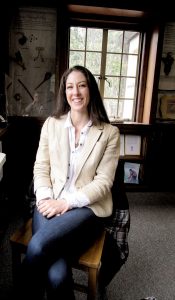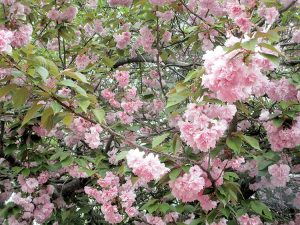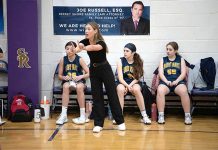By Joseph Sapia
As a bee flies to a flower, eating pollen or nectar, it unintentionally carries pollen on its body to the other flowers it continues to visit. This transfer of pollen results in reproduction of the flower which, in turn, grows seeds and fruit. This is how humans get much of their food.
“Bees pollinate 75 percent of our food crop,” said Amanda Brockwell, deputy executive director of the Monmouth Conservation Foundation (MCF). “If bees go away, we have a big problem.”
In its “Kids for Conservation, Project Pollinator” program, MCF is partnering with Monmouth University and various schools. The schools represent about 650 pre-kindergarten and kindergarten children, Brockwell said.
“The purpose of the project is to educate the youngest members of the community and their families about pollinators, their decline and what we can do to help,” Brockwell said. “The action in there (is to) encourage people to plant pollinator gardens.”
Much of the decline in pollinators – bees, butterflies, hummingbirds, moths, bats and ants, for example – is attributable to habitat loss via development. This ties into MCF’s purpose of preserving land.

In Kids for Conservation’s third year, this topic “resonates with a child and resonates with our mission as well,” Brockwell said. “That’s really the crux, habitat loss of land and how that relates to pollinators,” she continued. “Talking about it in terms of bees, butterflies and hummingbirds helps to make the concept reachable to 5-year-olds. Igniting that in kids has been wonderful.”
“Children are naturally curious,” said Kerry Carley-Rizzuto, a Monmouth University assistant professor of education who worked with MCF on the project.
“So fun to see the kids light up about it,” said Brockwell said. “What child can’t relate to a butterfly?”
At Meadow Lane Nursery School in Fair Haven, 27 4- and 5-year-olds are taking part in Project Pollinator, said head teacher Adria Ayres. “I love to teach children about nature,” Ayres said. “Pollination is part of our food chain. I wanted children to learn how important it was to protect the pollinators.”
On a walk, Ayres and her students saw bees on an azalea bush.
“We stopped to watch them,” Ayres said. “The children were just intrigued.”
Whereas many of the children feared bees, they now look to bees in a different light. “We have to protect the bees. They won’t hurt us” if people keep their distance, she says.
Another school taking part in Project Pollinator is Viola L. Sickles School in Fair Haven. There, about 80 kindergarteners are taking part. The Pollinator Project timing was perfect for a garden project being done by a Sickles alum Michael Frissora for his Boy Scout Eagle project.
“Everything just sort of fell into place,” said Cheryl Cuddihy, principal at Sickles.
Brockwell and the Monmouth University student-teachers recently visited Sickles School.
“They completed a bunch of lessons,” said June Sustick, media specialist at Sickles School. “And we repeated what they did for the other classes.”
The students are “just grasping it, making connections to the world in a natural setting,” Cuddihy said.
MCF is giving out packets of seeds to grow plants attractive to pollinators and, also, working with Brookdale Community College and the Wall Township High School Environmental Club to grow pollinator plants.
Leslie VanCleve, Brookdale’s greenhouse caretaker, worked with the college students, planting and taking care of such pollinator plants as milkweed, parsley and dill, said Patricia K. Dillon, a Brookdale biology professor.
Other plants attractive to pollinators include black-eyed Susan, butterfly weed, purple cone flower and cardinal flower, according to Brockwell.
In terms of lessons, the kids may take cotton and act as a pollinator themselves, transferring pollen stuck to the cotton from flower to flower, Brockwell said.
The program, free to schools, is being funded in part by a $5,000 grant from the Mary Owen Borden Foundation, based in Rumson.
Students of Carley-Rizzuto, “created a pollinator lesson plan for these little guys,” Brockwell said.
“We kind of got a Dream Team together,” said Carley-Rizzuto, referring to the approximately 10 undergraduate student-teachers involved in the project. “They essentially designed a curriculum; they designed very extensive lesson plans.”
At Meadow Flower Nursery School, Ayres said she used “some of the ideas they sent from Monmouth University, that was the jumping point.” She adapted them into her own plan and hopes to use it from year to year.
“There actually is an educational takeaway,” Brockwell said, “building a next generation of support and making our communities a better place.”
How is that done?
Well, Carley-Rizzuto explained how children who are in the program react:
“They see children running away from bees, swatting them and (they) say, ‘Stop that, bees are our friends.’”














